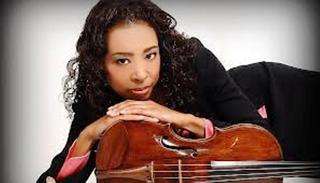|
Back
The Concord of the Emersons New York
Alice Tully Hall, Lincoln Center
07/30/2018 -
Henry Purcell: Fantasia upon One Note, for Five Viols
Johann Sebastian Bach: Fugue in D Minor, from Well-Tempered Clavier, Book 1 (Arranged by Emanuel Alois Förster)
Wolfgang Amadeus Mozart: String Quintet in G Minor, K. 516
Felix Mendelssohn: String Quintet No. 2 in B-flat major, Opus 87
Nokuthula Ngwenyama (Viola), Emerson String Quartet: Eugene Drucker, Philip Setzer (Violins), Lawrence Dutton (Viola), Paul Watkins (Cello)

Emerson String Quartet (© Courtesy of the Artists)
“Instead of an elaborate harangue on the beauty and the charms of music (which after all that words can contrive...is best by the performance of a skilful hand and an angelical voice) I shall say but a very few things by way of Preface...”
Henry Purcell in Preface to Sonatas of III Parts
Had he lived his more than three-score-years-and six, had he not caught that fatal respiratory disease because his wife made him sleep on the ground after too many ales in the local tavern, Henry Purcell would have altered music more than Monteverdi or Beethoven or Stravinsky. No doubt of it. And under the ten “skilled hands” of the Emerson Quartet and guest violist Nokuthula Ngwenyama, even the first five minutes of last night’s concert would have proven that.
It was a transposition, of course. Purcell had composed his Fantasia upon One Note for five viols, and the quintet last night had the finest of strings to “civilize” the sounds which viols make so roughly. Besides that, it was a puzzle, a joke, a challenge for the composer to start off with the treble viol (in this case Second Violist Ngwenyama) to play the note C, and continue with that single note as a drone against the other instruments.
With viols, the sounds inevitably would be rustic, perhaps blending into each other. Purcell’s invention, his harmonies, his polyphony and sudden darts of rhythm with these five players had a transparency of lines, a limpidity in the Andante and a jolly rusticity in the final movement that was so endearing.
Actually, the Emerson Quartet dared to begin with a 17th Century novelty, yet one did get in the mood for more usual fare. Except that again they deceived the full-house audience in Alice Tully Hall with a Bach fugue, this fugue arranged by a friend of Mozart, one Emanuel Alois Förster. It was more complex (and perhaps more academic) that Purcell’s romp, but again we had a well-defined work. We couldn’t smile, but we did have great respect.

N. Ngwenyama
Following this were two chamber music masterpieces, both with the rare offering of two violas. Most composers used a pair of cellos for their quintets–but Mozart, Mendelssohn, Dvorák and Brahms had the more challenging choices of the usually “invisible” member of the quartet, the viola.
The Emerson Quartet is so experienced (even with a few changes of personnel) that one knows this will be music played with utmost skill, with expected brio and expected meditation when needed. For the Mozart and Mendelssohn, the Emerson offered sheer excellence and (in Purcell’s words) “angelical voices”.
Added to this was Ms. Ngwenyama, Californian born, with a Zimbabwean/Japanese heritage. So effortlessly did she blend in with the ensemble that she could rarely be singled out. But in those lovely duets in thirds during the Mendelssohn, with First Violist Lawrence Dutton, one could hear what a talent she is.
The interesting thing here was that Mendelssohn sounded the 18th Century Classicist, while Mozart, in one of his final works, became the surprising Romantic.
Mendelssohn’s Second Quintet did, yes, embrace a kind of Sturm und Drang fire in the first movement, where the Emerson buzzed through, with some extraordinary playing by the two violins. Yet here, one thought that this was a beautifully put-together work, that the Mendelssohn inspiration was tempered by elegance, by the “right” mood, whether it the mildly incendiary start of the opening or the atmospheric grief of the Adagio.
With the Emerson and Nokuthula Ngwenyama, one felt a momentum throughout the work, brilliant playing for a work whose own brilliance had intelligence, freshness and Classical symmetry.
That could hardly be said for the Mozart G Minor Quintet. For those hearing this for the first time (as I did so many years ago), that supposedly simple opening theme is transformed into a strange chromatic melody. No chamber ensemble needed to emphasize the Mozart unfettered creativity, and the Emerson played it through, letting its exceptional motifs speak for themselves. No other 18th Century composer, not even the impetuous Haydn, would take so many chances. The Emerson, with no undue emotion, allowed the dissonances, the sudden falls, those erratic meaningful measures to take full rein.
Add to this a Minuet which was anything but a court dance. The Emerson Quartet and Ms. Ngwenyama played it like rebels ready for the fight, dancing on the wrong beats, tempered only by the Trio.
And here one listened to the Emerson at its best. A duet of the violas, and a temporary farewell by violin and cello. A euphoric moment.
Now came Mozart the Romantic. Yes, a lovely Adagio. Not written with grief, but a silken translucency by all the players. The grief came later, in the second adagio, this to introduce the lively last movement.
All was performed with the Emerson’s mastery, its strength, and–as a quintet–with added color and ofttimes piercing depth.
Harry Rolnick
|